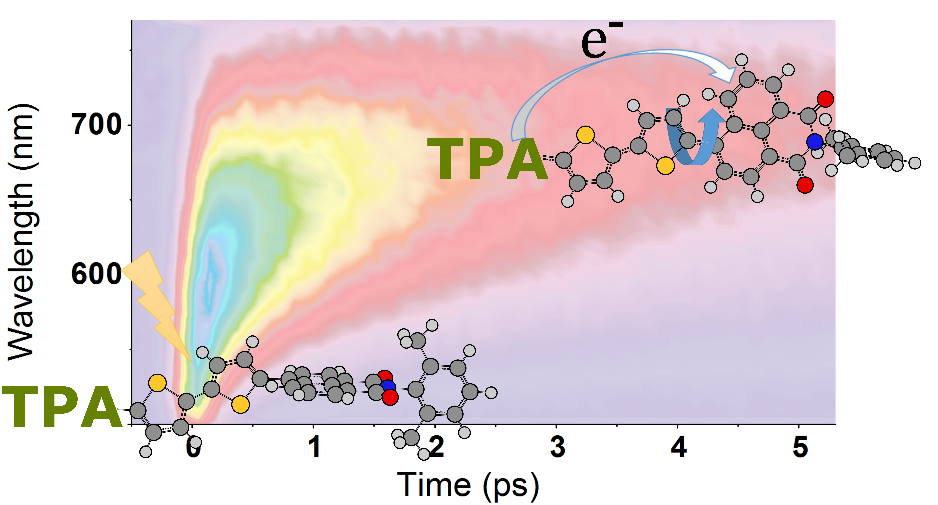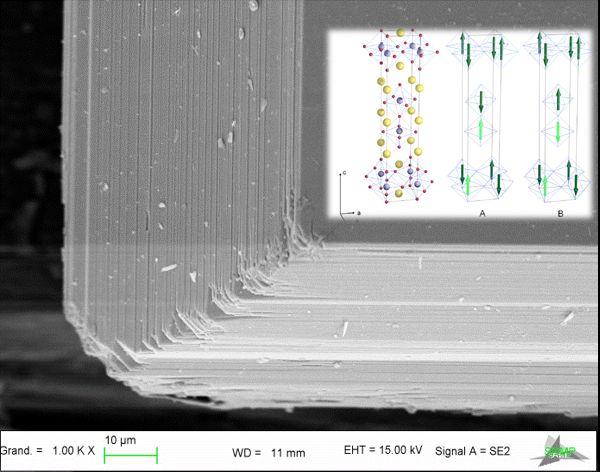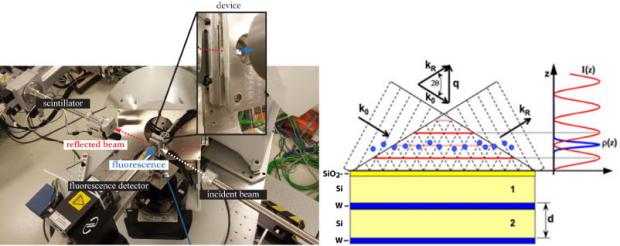2016
The iridates (eg Sr2IrO4, Sr3Ir2O7 ...) have recently attracted the attention of the scientific community due to the presence of a strong spin-orbit coupling and strong electronic interactions that give rise to original physical properties as the high Tc superconductivity or the state of topological insulator. We explore in detail the impact of a strong spin-orbit coupling in these compounds by synthesizing single crystals with a method of self-flow and thin films by PLD technique and by studying the magnetic and transport properties of these oxides.
On these issues, the group has developed national and international collaborations in particular with: LPS-Orsay; Soleil; MPQ-Paris7; LLB-Saclay ;
Contact CEA-IRAMIS/SPEC : Dorothée Colson (SPEC/LNO)
Projects: SOCRATE (ANR 2015-2019)
Background
The distribution of ions and charges at solid-water interfaces is of key importance in a number of phenomena and processes. In particular the development of micro- and nano-fluidics has strengthened the need for characterizing, understanding, modeling and controlling ion distributions in the electric double layer [1]. Indeed, surface driven transport phenomena such as electro-osmosis or electrophoresis are sensitive to charge distribution, and phenomena occurring within the diffuse Gouy-Chapman layer become dominant in determining flow properties as channel size, Debye length and slip length become on the same order of magnitude, leading to unusual phenomena [2]. With charged walls, channels can be filled with a unipolar solution of counter-ions, suggesting that the type and concentration of ions can be controlled by the surface charge density of the channel wall [3]. Here, specific effects (size, polarisability, hydration of the ions) could allow for even finer control over the ion type [4].
[1] L. Bocquet and E. Charlaix. Chemical Society Reviews, 39:1073–1095, 2010.
[2] Q.S. Pu, J.S. Yun, H. Temkin, and S.R. Liu. Nanoletters, 4:1099–1103, 2004.
[3] R. Karnik, R. Fan, M. Yue, D.Y. Li, P.D. Yang, and A Majumdar. Nanoletters, 5:943–948, 2005.
[4] Ion-specific anomalous electrokinetic effects in hydrophobic nanochannels,
D.-M. Huang, C. Cottin-Bizonne, C. Ybert, and L. Bocquet. Physical Review Letters, 98 (2007) 177801.
Solar energy conversion is today a fact. Traditionally dominated by crystalline silicone, new alternative technologies are emerging, in particular based on organic photovoltaics (OPV), hybrid solar cells (dye-sensitized solar cells) or new inorganic materials such as perovskites and nanomaterials. The efficiency of a photo-active material depends on the charge separation process that is itself largely dependent on the structural properties of the material. Charge carriers can be trapped and other competing non-radiative relaxation processes may decrease the efficiency. The initial processes preceding the charge separation are studied in DICO using time-resolved spectroscopy.
This topic is being developed in two directions :
2. Hybrid organic-inorganic structures
Dye Sensitized Solar Cells, also known as Grätzel cells, are very promising owing to their potential efficiency as well as being cheap. However, further improvements are necessary, particularly on the photocathode side. This requires a more detailed understanding of the molecular and electronic dynamics. To this purpose we have undertaken a study of the photophysics and the primary processes occurring after light absorption using femtosecond luminescence up-conversion (project funded by the CEA programme DSM Energy).
A PhD student, Valentin Maffeis, co-directed by Drs. Thomas Gustavsson and Bruno Jousselme (DRF/IRAMIS/NIMBE/LICSEN) is working on this subject (2015-2018).

Figure 1. Time-resolved fluorescence spectra of a new push-pull type molecule I solution. The excited charge transfer state formed by light absorption is strongly stabilized by the polar environment. The charge separation (and ultimately, the charge injection) occurring in the excited state is in dynamic competition with the energy stabilization which leads towards a non-radiative internal conversion (leading to electron back transfer). It is therefore important to characterize the different processes involved in order to optimize the "wanted" reaction paths (charge separation) with regards to the "unwanted" reaction paths (internal conversion).













